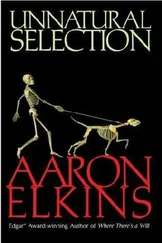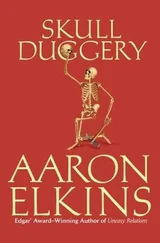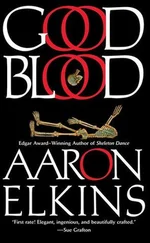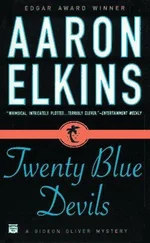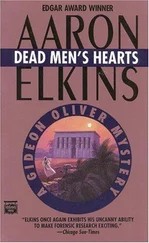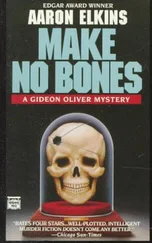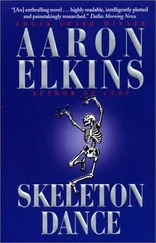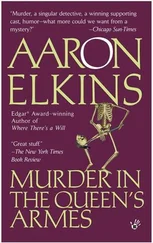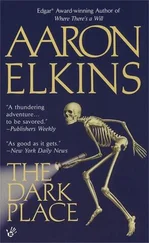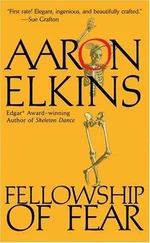Blinking, he opened one of the doors enough to stick his head through. “ Che . . . che cosa . . . ? ”
“It’s all right, Alberto,” Rocco yelled back to him in Italian, his hands lifted placatingly. “This is nothing official. We just want to look at that skeleton you got the other day. It’s for our school.”
“You mean right now? But . . . but there is a memorial service in progress in the chapel,” he whispered. “I can’t have you . . . marching through . . .” His hands were fluttering in front of his chest. Gideon expected him to start wringing them, and a second later he did. “The mourners . . .”
“Well, let us into the workroom through the back door, then. We won’t go anywhere near the chapel. They’ll never know we’re here.”
“You’re not going to take the, the remains away, are you? The cremation is tomorrow. It’s all been arranged by the son, and I don’t want—”
“I’m Professor Oliver,” Gideon interrupted in Italian. His command of the language was good enough to put together grammatically correct sentences (as long as they were in the present tense), and to comprehend a good deal more. “I’m in charge of the class, and I promise you that we won’t disturb the remains in any way. All we need is an hour, and we’ll leave everything as we find it.”
“Of course, yes, I see. Now, I . . . I haven’t done anything with them, you understand. That is to say, I haven’t prepared them, other than to clean them up a little—”
Rocco laughed. “Alberto, they’re bones. I don’t think anybody expected you to embalm them.”
“Well, that’s certainly so, ha-ha.” He cleared his throat and lowered his voice even more. “Come around to the back then. I’ll get them out for you.” He hesitated. “And Rocco—perhaps you could see to it that these police cars are moved out of sight to the parking area in back? It doesn’t look so good to visitors, you know?”
• • •
ASforensic scientists went, Gideon Oliver was a celebrated wuss. He didn’t like working with dead bodies, and the more violent the manner of death or the fresher the bodies, the queasier they made him. What he did like working with, what intrigued and motivated him, were skeletons: the cleaner, and drier, and older, the better. Early Pleistocene remains were about right, and they constituted his main area of scholarly research. He didn’t like autopsy rooms, he didn’t like dissection labs, and he didn’t like mortuary embalming rooms. As a result, the preparation room at Onoranze Funebri Cippollini came as a pleasant surprise. When the door was opened and signor Cippollini stepped out of the way to let them in, Gideon steeled himself for the expected odor (a combination of innards and formaldehyde, like a high-school lab where frogs and fetal pigs are dissected, only worse). Instead, what greeted him was a welcome wisp of lavender. And the room itself was almost jolly, with multicolored wall tiles randomly placed among the white ones. Even the bases of the two work tables were faced with colorful tile mosaics.
And no bidet-like conveniences for flushing away the bodily flu- ids and other nastinesses that came out of corpses. None of the other medieval-torture-chamber implements he’d expected either—the tongs, the knives, the alarming hypodermics. Of course—he’d forgotten: Italians by and large didn’t practice embalming. Rooms like this were used for little more than a washup, a little cosmetic work if necessary, and a proper fitting-out for viewing at the memorial, which usually took place within a couple of days, for obvious reasons.
There were two standard zinc work tables in the room, though, on one of which Cippollini placed the remains, enclosed in a three-foot-long box of heavy cardboard; a child’s cremation container, Gideon assumed.
“Let’s get at it,” he said when Cippollini reluctantly left them to it. “Rocco, this is your treat, so if you’ll remove the bones one by one, I’d like everyone to work together getting them laid out as near as possible to their anatomical relationship. And I’ll just watch from back here and keep my mouth shut.”
“Don’t bet on it,” muttered a big Hawaiian with an affable, easy laugh.
“Hey, when I say something, you can take it straight to the bank,” Gideon said, smiling back.
John Lau was his closest friend, an FBI special agent out of the Seattle field office. They had worked together more than once, and the two of them with their wives got together regularly back home. John had taken a similar seminar from Gideon years ago, when the symposium had convened in St. Malo, France, but science, as does everything else, changes with time, and he, like two of the other attendees, was back for a refresher. Gideon and John had both come with their wives and had been seeing Florence together in their off-time, so it had been as much pleasure as work. And then when the seminar ended the following day, the four of them were off to a winery out in the Tuscan countryside, where the two women had signed up for a five-day cooking class.
Rocco had barely gotten the skull out of the box when John was proved right. “Whoa, hold it, what do we have here?” Gideon exclaimed.
“Ha,” observed John in quiet triumph.
Rocco handed over the skull, and Gideon peered hard at the frontal bone, running his fingers over an area in the center of the forehead, where the hairline would be on a living person. “Well, this is something you don’t see every day,” he murmured.
“Oh, I can tell you what that is,” Rocco said. “We figured that out pretty fast.”
“I’m sure you can, but let’s see what the rest of us come up with, okay? Anybody got a flashlight?”
Someone handed over a penlight attached to a key chain, and Gideon stuck it in the opening at the base of the skull to light up the interior. “Huh,” he said, “that’s what I thought. Interesting.” He handed back the penlight, turned the skull right side up, and held it in both hands just above the tabletop so that the area he’d been so interested in was uppermost. At that spot there was a sort of escarpment; an inch-long ridge of bone rising from the flat, curving plateau of the skull, looking for all the world as if there had been an eruption below the surface.
“Ideas, anybody? What do you suppose this could be?”
“Would it be a genetic thing?” someone asked.
“Nope.”
“Some kind of bone disease?
“Nope.”
“Brain disease?” This from John.
“Uh-uh.”
“Some kind of trauma?”
“Good man. Trauma it is; blunt trauma. What we have here, you see, is an unusual kind of depressed fracture—what I think of as a reverse depressed fracture.” He explained that a depressed fracture was a fairly common kind of cranial injury that jams a segment of bone inward, so there is (usually) a sharply defined indentation in the bone. For example, a blow with a ball-peen hammer can leave a dent the exact shape and size of the hammer’s ball, sometimes even reproducing its irregularities closely enough to permit identification of the specific weapon. The area on the underside of the dent, of course, is necessarily forced inward, frequently causing grave damage to the brain.
“You’re losing me, professor,” someone said. “This part here”—the speaker fingered the ridge—“isn’t dented in , it’s sticking up .”
“Exactly,” Gideon replied. “Which is why I call it a depressed fracture in reverse—the force came from inside the head and pushed outward .”
This produced the expected murmurs of incredulity. “How can that be?” someone said.
“Ah,” said Gideon, “that is for me to know and you to find out—shut up, Rocco—which I have no doubt that you will do in the next few minutes. But for the moment, go ahead and continue laying out the bones. I’ll just stand here and keep perfectly quiet.” He leveled a quick forefinger at John as his friend opened his mouth to speak. “Watch it.”
Читать дальше

